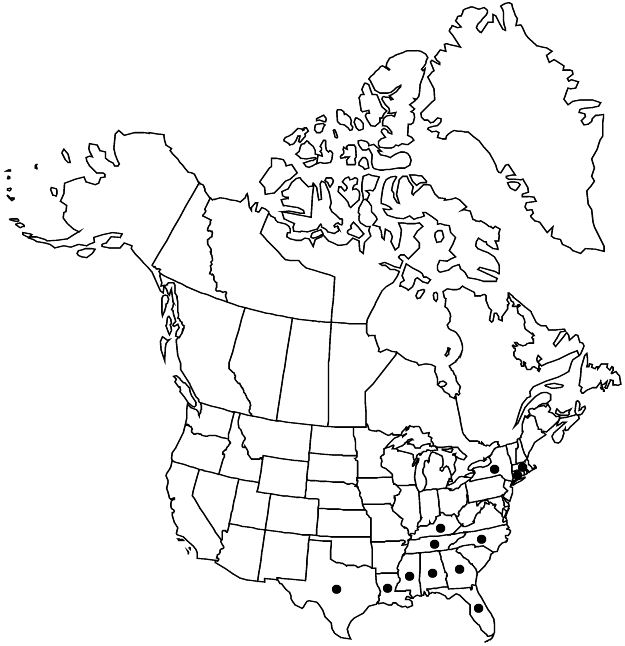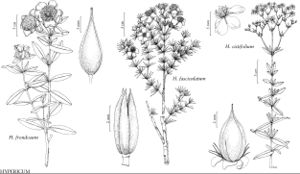Hypericum frondosum
Fl. Bor.-Amer. 2: 81. 1803.
Shrubs, erect, forming rounded bush or treelike, (6–) 10–30 dm. Stems: internodes 4-lined at first, then 2-lined to terete. Leaf-blades usually oblong to lanceolate-oblong, sometimes oblanceolate, 25–65 × 8–22 mm, base articulated, broadly to narrowly cuneate, margins plane or subrecurved, apex apiculate-obtuse to rounded, midrib with 10–16 pairs of branches. Inflorescences 1–3 (–7) -flowered from apical node, sometimes with paired single flowers or triads (3-flowered cymules) or 1–3-flowered branches at proximal node. Flowers 24–45 mm diam.; sepals deciduous, not enclosing capsule, (4) 5, ovate or oblong to elliptic-spatulate, unequal, 6–14 (–20) × 4–10 mm; petals (4–) 5, golden yellow to orange-yellow, obovate to oblanceolate, 12–25 mm; stamens deciduous, 250–650; ovary 3-merous. Capsules ovoid-conic to ovoid-rostrate, 12–15 × 6–8 mm. Seeds carinate, 1.5 mm; testa linear-reticulate. 2n = 18.
Phenology: Flowering summer (Jun–Jul).
Habitat: Dry cedar-glades and barrens on limestone and calcareous shale
Elevation: 100–500 m
Distribution

Ala., Conn., Fla., Ga., Ky., La., Mass., Miss., N.Y., N.C., Tenn., Tex.
Discussion
Hypericum frondosum is endemic to the southwestern end of the Appalachian Range; it is recorded as introduced in Connecticut, Massachusetts, and New York (W. P. Adams 1962). Records from Arkansas and, possibly, South Carolina and Virginia appear to be errors for H. prolificum. Although H. frondosum is variable over its natural range and approaches H. prolificum morphologically in Arkansas, it remains distinct from its immediate relatives. In cultivation, it sometimes hybridizes with H. prolificum. Artificial hybrids have been made, as well as artificial tetraploids (O. Myers 1963).
Selected References
None.
